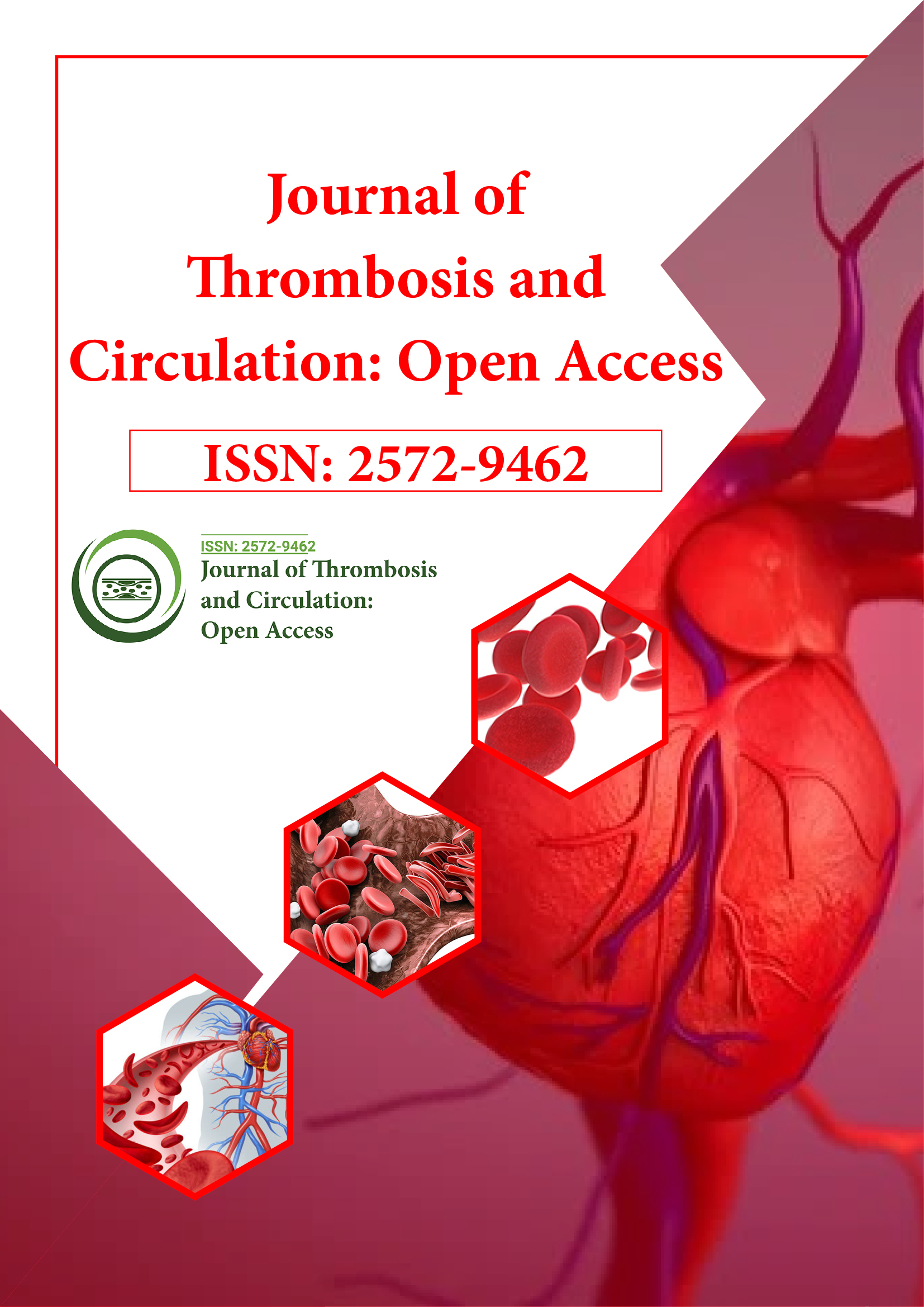Indexed In
- RefSeek
- Hamdard University
- EBSCO A-Z
- Publons
- Google Scholar
Useful Links
Share This Page
Journal Flyer

Open Access Journals
- Agri and Aquaculture
- Biochemistry
- Bioinformatics & Systems Biology
- Business & Management
- Chemistry
- Clinical Sciences
- Engineering
- Food & Nutrition
- General Science
- Genetics & Molecular Biology
- Immunology & Microbiology
- Medical Sciences
- Neuroscience & Psychology
- Nursing & Health Care
- Pharmaceutical Sciences
Opinion Article - (2023) Volume 9, Issue 5
Significant Role of the Right Ventricle in Pulmonary Circulation
Suzuki Kotani*Received: 18-Aug-2023, Manuscript No. JTCOA-23-23291; Editor assigned: 21-Aug-2023, Pre QC No. JTCOA-23-23291 (PQ); Reviewed: 06-Sep-2023, QC No. JTCOA-23-23291; Revised: 13-Sep-2023, Manuscript No. JTCOA-23-23291 (R); Published: 21-Sep-2023, DOI: 10.35248/2572-9462.23.9.250
Description
The human heart is a remarkable organ that pumps blood throughout the body, ensuring oxygen and nutrients reach every cell. While most discussions about cardiac function often focus on the left ventricle, the right ventricle plays an equally significant role in maintaining circulatory equilibrium. In this article, we will explore the hemodynamics of the right ventricle and the pulmonary circulation, focusing on their intricate mechanisms and the importance of their harmonious operation.
The right ventricle: A unique chamber
The heart consists of four chambers: two atria and two ventricles. The right atrium receives deoxygenated blood from the body and pumps it into the right ventricle. The right ventricle, unlike its counterpart on the left side, has a thinner muscular wall. This adaptation allows it to handle lower pressure, as its primary role is to pump blood to the lungs for oxygenation.
Pulmonary circulation: A significant detour
When the right ventricle contracts, it propels deoxygenated blood through the pulmonary valve into the pulmonary artery. From there, the blood enters the pulmonary circulation, which is distinct from the systemic circulation. Here are some key hemodynamic principles governing the pulmonary circulation:
Low-pressure system: Unlike the left ventricle, which pumps blood into the high-pressure systemic circulation, the right ventricle operates in a low-pressure environment. This is because the pulmonary circulation only needs to overcome the resistance of the lungs to achieve gas exchange, not the entire body's resistance.
Oxygenation: The primary goal of the pulmonary circulation is to deliver deoxygenated blood to the lungs and return oxygenated blood to the heart. In the lungs, the blood vessels branch into smaller arterioles, capillaries, and venules, facilitating the exchange of oxygen and carbon dioxide with the alveoli.
Compliance: The walls of the pulmonary arteries and arterioles are more compliant (stretchable) than those of the systemic circulation. This allows them to accommodate variations in blood flow and pressure, ensuring efficient oxygenation during activities such as exercise or rest.
Reflex control: Pulmonary circulation is highly responsive to local and systemic factors, such as changes in oxygen levels and blood pH. These reflexes help regulate blood flow through the lungs to optimize oxygen uptake and maintain acid-base balance.
Right ventricle-pulmonary circulation interaction
The right ventricle and pulmonary circulation are intimately connected, and their interaction is significant for overall cardiovascular health. When the right ventricle contracts, it must generate enough force to overcome pulmonary vascular resistance and propel blood into the lungs. This pressure difference between the right ventricle and pulmonary circulation, known as the pulmonary pressure gradient, determines the flow of blood through the lungs.
Any disruption in this delicate balance can lead to various cardiovascular conditions, such as pulmonary hypertension or right heart failure. Pulmonary hypertension, for instance, occurs when the pulmonary arteries constrict or become less compliant, increasing the resistance the right ventricle must overcome. This results in elevated pressure in the right ventricle, which can eventually lead to right heart failure if left untreated.
Understanding the hemodynamics of the right ventricle and pulmonary circulation is essential for comprehending the intricacies of the human circulatory system. While the left ventricle often takes the spotlight, the right ventricle's role in delivering deoxygenated blood to the lungs is equally critical for maintaining our overall well-being. The harmonious interaction between the right ventricle and the unique pulmonary circulation ensures that our bodies receive the oxygen they need to function optimally. It is a testament to the remarkable design of the human heart and its ability to adapt and respond to changing physiological demands.
Citation: Kotani S (2023) Significant Role of the Right Ventricle in Pulmonary Circulation. J Thrombo Cir. 9:250.
Copyright: © 2023 Kotani S. This is an open-access article distributed under the terms of the Creative Commons Attribution License, which permits unrestricted use, distribution, and reproduction in any medium, provided the original author and source are credited.
